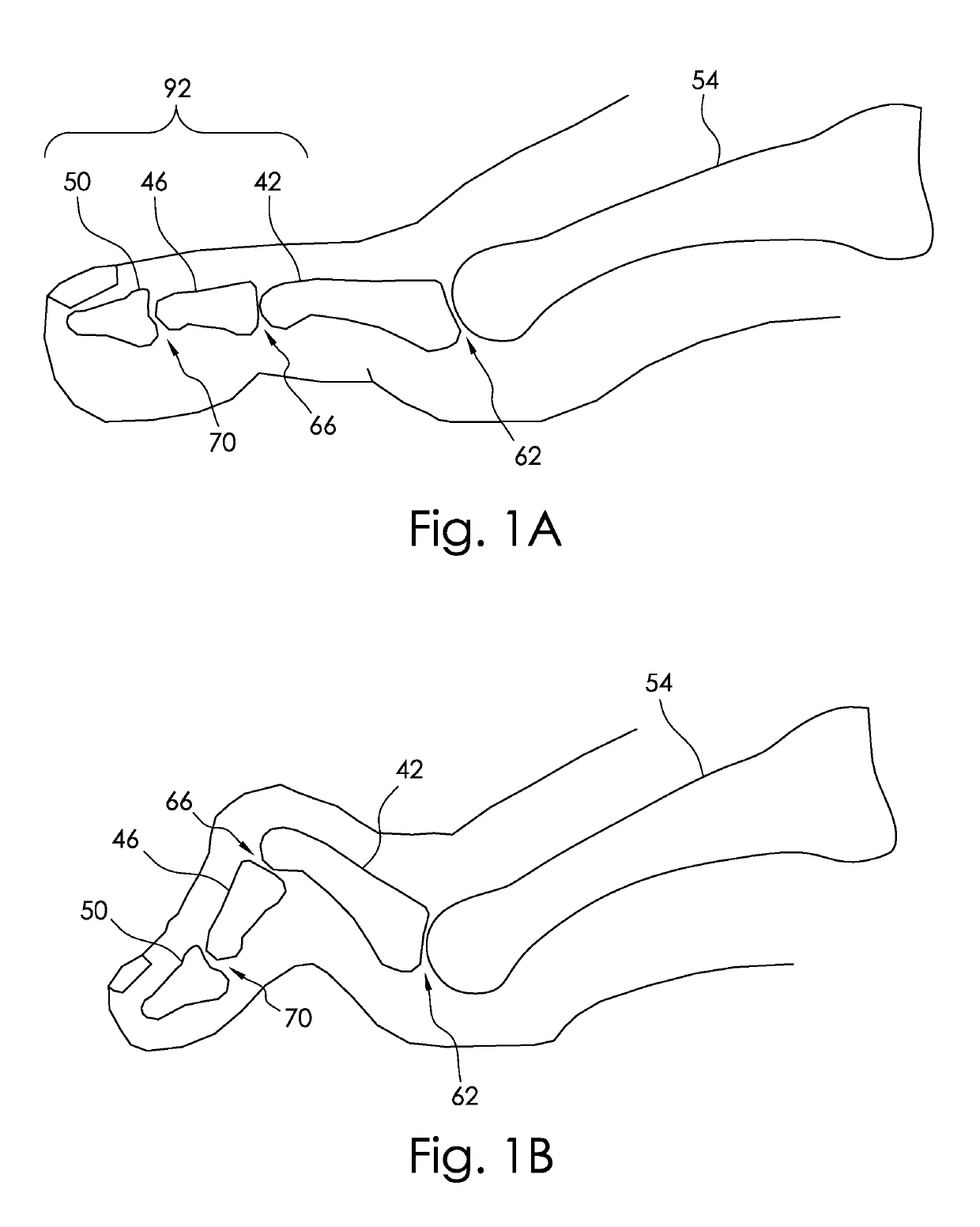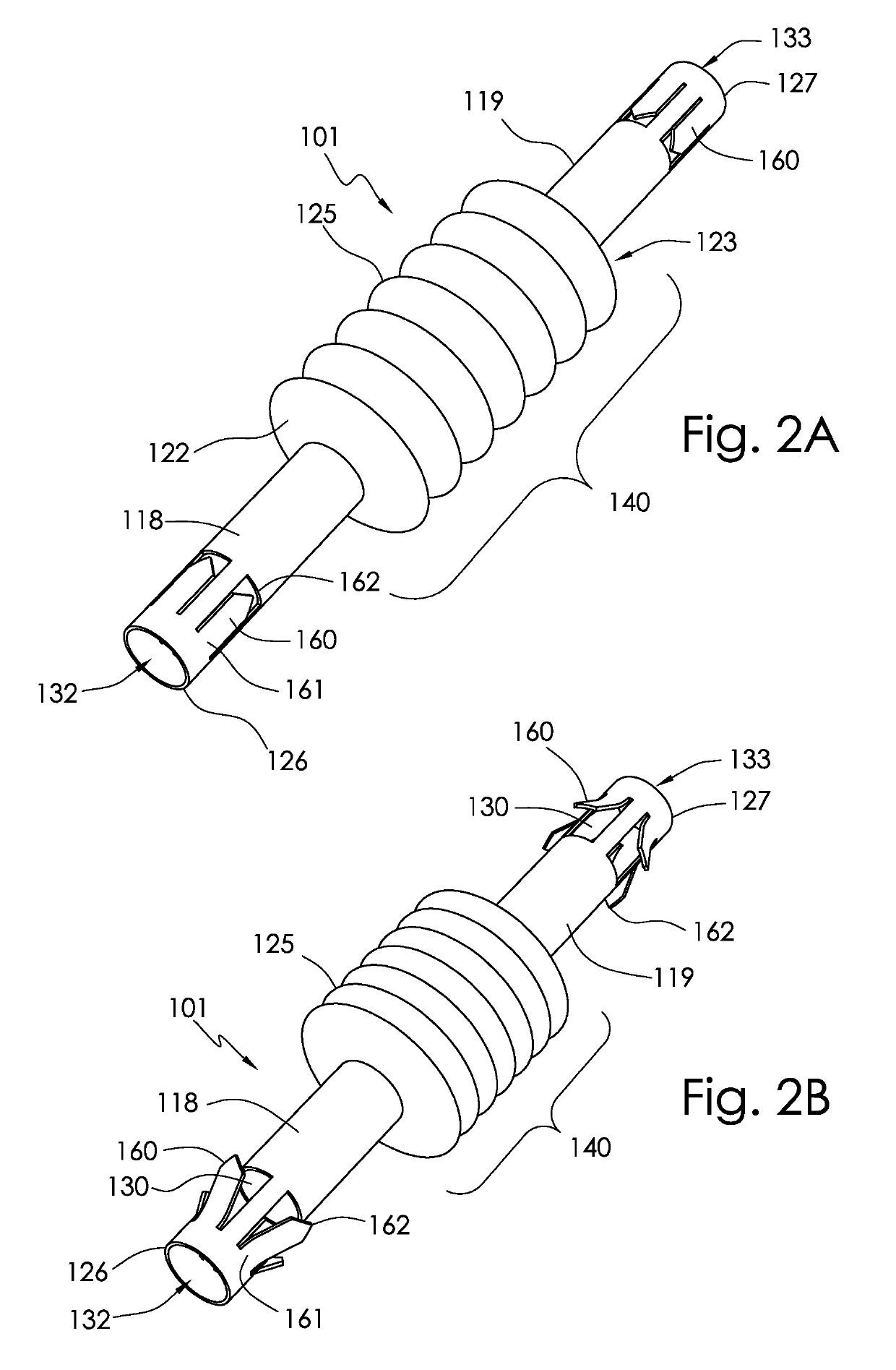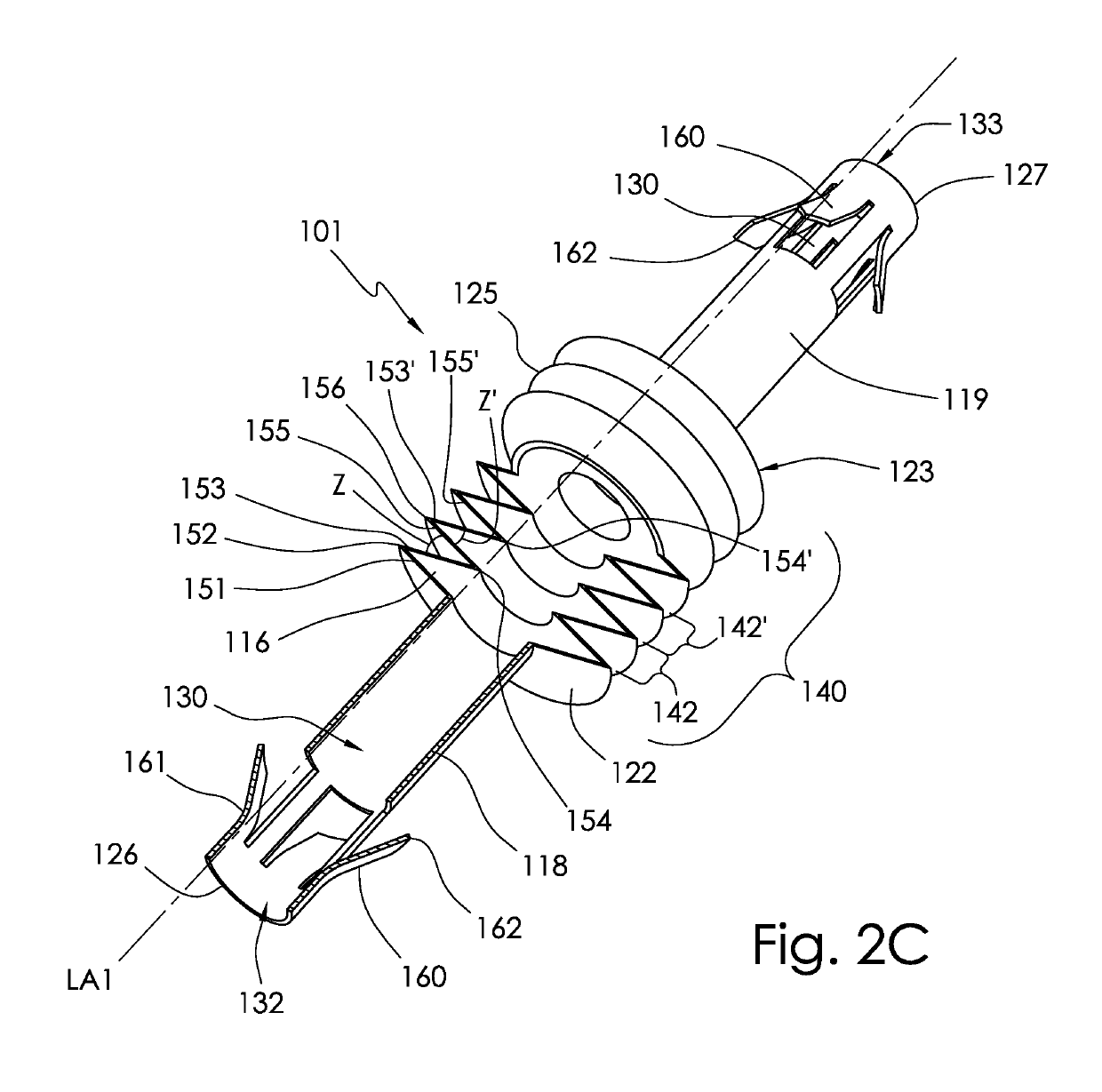Fasteners with shape changing zigzag structures and methods using same
a technology of zigzag structure and fasteners, applied in the field of fasteners with shape changing zigzag structure and methods using same, can solve problems such as human or animal use, achieve the effects of preventing slipping or accidental displacement of implants, preventing damage to adjacent joints, and accurate placemen
- Summary
- Abstract
- Description
- Claims
- Application Information
AI Technical Summary
Benefits of technology
Problems solved by technology
Method used
Image
Examples
first embodiment
Operation of First Embodiment
[0093]Fastener 101, as well as the other embodiments described herein, may be made from a shape memory alloy, such as Nitinol, though there are other shape changing materials available that also may be used. When any of these embodiments are used, say for a surgical procedure like a hammertoe correction, the properties of the metal or other material allow it to exist in different shapes at different temperatures. For example, when the Nitinol embodiment is moved from a cool or cold state, at which time it is in its martensite phase, and then implanted in the body and warmed to body temperature, it will undergo a change in its shape as it transforms to its austenite phase.
[0094]As shown again in FIGS. 2A and 2B, bellows 140 will shorten along its axial length, like an accordion, during its phase change from a martensitic phase to an austenitic phase. At the same time, barbs 160 on sleeves 118 in 119 will go through a phase change as well, expanding radial...
second embodiment
[0103]FIG. 5 shows a second embodiment as an alternative to the first embodiment wherein a fastener 201 has a similar appearance to fastener 101 but has a closed accordion-like section in which pleats 242 of a bellows 240 are square shaped instead of round or cylindrical. Still other cross-sectional shapes may be used for the bellows section as well, such as oval, rectangular or triangular, but all of these shapes are still folded or pleated along the longitudinal axis of the contractible portion. Although the structural details of the accordion section and the anchoring members may differ, the second embodiment has the same functional features as described for the first embodiment and as shown best in FIG. 2C. Thus, fastener 201 has a cannulation 230 passing centrally through the long axis of the fastener as in the first embodiment of FIGS. 2A-2C. Anchoring means in the form of a plurality of barbs 260 are also similar to the first embodiment, as is the functionality of the accordi...
third embodiment
Operation of Third Embodiment
[0108]The final placement of the fastener 301 is shown best in FIG. 6B. The application of the third embodiment requires the proximal phalanx and the middle phalanx to be prepared with angular cuts. The cut surface of the proximal or middle phalanx, instead of being cut perpendicular to the long axis of the bone, is cut at an angle to the long axis. The sum of the angles cut into both phalanxes is such that it matches the built-in angle of the embodiment; say ten to fifteen degrees for a toe or whatever the angle of the embodiment.
[0109]The step wise application of the embodiment is otherwise the same as in FIGS. 4A through 4F. The proximal phalanx 42 is cut and the middle phalanx 46 is cut, each at one-half of the desired full angle. A guide wire is placed axially into the proximal phalanx and the phalanx is then counterbored to create a bore hole 11 for the implant. The guide wire 43 is then removed and driven axially into the middle phalanx 46 and out...
PUM
 Login to View More
Login to View More Abstract
Description
Claims
Application Information
 Login to View More
Login to View More - R&D
- Intellectual Property
- Life Sciences
- Materials
- Tech Scout
- Unparalleled Data Quality
- Higher Quality Content
- 60% Fewer Hallucinations
Browse by: Latest US Patents, China's latest patents, Technical Efficacy Thesaurus, Application Domain, Technology Topic, Popular Technical Reports.
© 2025 PatSnap. All rights reserved.Legal|Privacy policy|Modern Slavery Act Transparency Statement|Sitemap|About US| Contact US: help@patsnap.com



